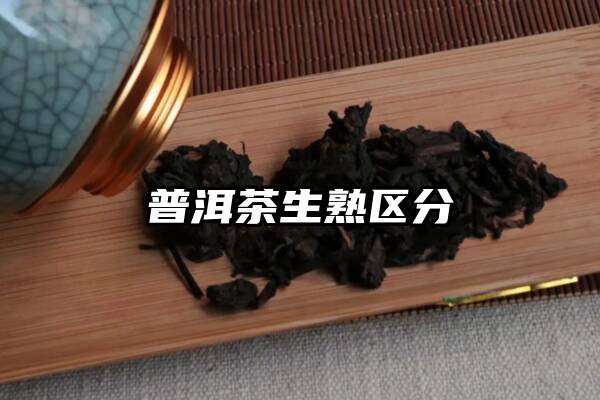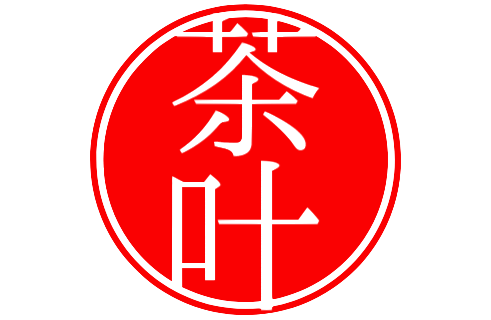普洱茶生熟那个好
【引言】
普洱茶是中国传统的名茶之一,其历史源远流长,丰富的文化背景和独特的口感赢得了众多茶叶爱好者的青睐。而普洱茶的生熟问题一直是茶界的热门话题,关于生熟普洱茶哪个好这一问题引发了广泛的讨论。本文将以通用性的风格深度挖掘并分析普洱茶生熟问题,为目标受众提供选择普洱茶的智慧之道。
【正文】
一、生茶与熟茶的基本区别
生茶和熟茶,顾名思义,指的是普洱茶制作过程中的两种不同发酵程度。生茶,也被称为青茶、绿茶,是指茶叶在初制过程中未经过人工发酵或极低程度的发酵;而熟茶,又称老茶、熟后茶,指的是经过人工堆制、加湿、发酵等工序制成的茶。
二、生茶与熟茶的特点对比
(一)生茶特点
1. 口感鲜爽:生茶由于未经过深度发酵,口感显鲜爽,具有清香、浓郁、回甘等特点。
2. 茶性较大:生茶中的儿茶素、咖啡碱等物质更为活跃,对身体的刺激性较强,适合茶叶爱好者以及需要提神、提升效率的人群。
3. 保存时间较长:由于生茶中的微生物活性较高,其保存时间相较熟茶更长,有利于茶叶熟化和陈化。
4. 适宜陈放:生茶的陈化过程更加缓慢,因此适合存放一段时间后食用,越陈越香。
(二)熟茶特点
1. 口感醇厚:熟茶经过较长时间的发酵,口感醇厚圆润,具有独特的“陈味”和“蜜香”。
2. 抗氧化性能较好:熟茶茶多酚经过发酵转化,其抗氧化性能较生茶更佳,对身体健康具有一定益处。
3. 降低刺激性:熟茶经过发酵过程,儿茶素、咖啡碱等物质的含量降低,刺激性相对较小,适合茶叶新手或胃肠较为敏感的人群。
4. 适宜即饮:熟茶不怀时机,制作精细,即饮即可品味其风味。
三、生茶与熟茶之争
1. 生茶的热度
随着近年来茶叶文化的兴起,生茶作为一种传统的饮茶方式,备受茶叶爱好者追捧。生茶的独特风味和保存时间较长等特点使得越来越多的人选择生茶作为自己品茗的首选。此外,生茶适合不同年份的茶叶进行品尝比较,有助于感受时间带来的差异变化。
2. 熟茶的“陈味”
相对于生茶,熟茶经过一段时间的陈化,呈现出独特的“陈味”,这是许多茶叶爱好者所喜欢的。熟茶的陈化能够使茶叶更加稳定,减少刺激性,适合于胃肠不适人群和茶叶新手。
3. 个人选择的智慧之道
生茶和熟茶的选择并没有绝对的优劣,个人口味和健康状况等因素都应考虑在内。如果您喜欢清爽、浓郁的茶汤,对儿茶素等物质的刺激能力较强,可以选择生茶;如果您喜欢醇厚、陈香的口感,胃肠相对敏感,可以选择熟茶。同时,也可选择在品茶的过程中尝试不同的生熟普洱茶,亲身感受其不同的风味变化。
四、如何选购普洱茶
1. 正规渠道:选择信誉良好、正规渠道购买普洱茶,确保茶叶的品质和原产地的真实性。
2. 查看产地和年份:可根据个人喜好选择不同的普洱茶产地和茶叶年份,以追求不同的口感和风味。
3. 品牌信誉和专业评价:对于没有专业知识的消费者来说,可以借助品牌信誉和专业评价作为选购普洱茶的参考依据。
【结论】
生茶和熟茶都有各自的特点和魅力,在确保茶叶的品质和正规渠道的前提下,个人口味和健康状况是选择生熟普洱茶的重要参考因素。生熟茶并无绝对的好坏,而是应根据个人的需求和喜好来进行选择。掌握选择普洱茶的智慧之道,品鉴不同茶叶带来的变化,也是一种独特的茶道体验。
【参考译文】
Puer Tea—The Wisdom of Choosing Raw or Ripe
[Introduction]
Puer tea, one of China's traditional famous teas, has a long history. Its rich cultural background and unique taste have won the favor of many tea lovers. The debate over the benefits of raw or ripe puer tea has always been a hot topic in the tea industry. This article will delve into and analyze the debate around raw and ripe puer tea, providing wisdom for target audiences in choosing Puer tea.
[Body]
1. The Basic Difference between Raw and Ripe Puer Tea

Raw and ripe puer tea, as the names suggest, refer to two different levels of fermentation during the production process. Raw puer tea, also known as green or raw tea, refers to tea leaves that have not undergone artificial fermentation or have undergone minimal fermentation. Ripe puer tea, also known as aged or post-fermented tea, refers to tea processed through artificial piling, humidification, and fermentation.
2. Comparison of Characteristics between Raw and Ripe Puer Tea
(1) Characteristics of Raw Puer Tea
1. Fresh Taste: Raw puer tea, due to its minimal fermentation, has a fresh taste with characteristics such as fragrance, richness, and lingering sweetness.
2. Stronger Tea Properties: Raw puer tea contains more active substances, such as catechins and caffeine, which have a stronger stimulating effect on the body. It is suitable for tea lovers or individuals who need to stay alert and improve productivity.
3. Longer Shelf Life: Due to the higher microbial activity in raw puer tea, it can be stored for a longer period compared to ripe puer tea, facilitating tea maturation and aging.
4. Suitable for Aging: Raw puer tea undergoes a slower aging process, making it suitable for storage and consumption after a certain period. The longer it ages, the more fragrant it becomes.
(2) Characteristics of Ripe Puer Tea
1. Mellow Taste: Ripe puer tea, after a longer fermentation period, has a mellow and rounded taste with unique \"aged flavor\" and \"honey fragrance.\"
2. Better Antioxidant Capacity: The fermentation transformation of polyphenols in ripe puer tea enhances its antioxidant capacity compared to raw puer tea, which has certain health benefits.
3. Reduced Irritation: The fermentation process of ripe puer tea reduces the content of substances like catechins and caffeine, resulting in less stimulation. It is suitable for tea beginners or individuals with sensitive digestive systems.
4. Suitable for Immediate Consumption: Ripe puer tea does not require aging and is finely crafted, making it suitable for immediate consumption to taste its flavor.
3. The Debate between Raw and Ripe Puer Tea
1. The Popularity of Raw Puer Tea
With the rise of tea culture in recent years, raw puer tea, as a traditional way of tea consumption, has been widely sought after by tea lovers. Its unique flavor and longer shelf life make it an increasingly popular choice. Additionally, raw puer tea is suitable for comparing teas from different years, allowing individuals to experience the changes brought about by time.
2. The \"Aged Flavor\" of Ripe Puer Tea
Compared to raw puer tea, ripe puer tea undergoes a period of aging, resulting in a unique \"aged flavor\" that many tea lovers enjoy. The aging process of ripe puer tea stabilizes the tea leaves, reduces irritation, making it suitable for individuals with sensitive stomachs and tea beginners.
3. The Wisdom in Personal Choice
The choice between raw and ripe puer tea is not an absolute matter of superiority or inferiority but should consider personal taste and health conditions. If you prefer a refreshing and rich tea soup with a stronger stimulating effect from substances such as catechins, raw puer tea may be the choice; if you prefer a mellow and fragrant taste with a sensitive digestive system, ripe puer tea may be the choice. At the same time, one can also experiment with both raw and ripe puer tea to personally experience the different flavor changes.
4. How to Purchase Puer Tea
1. Choose Reliable Channels: Select trustworthy and legitimate channels to purchase Puer tea to ensure the quality of the tea and the authenticity of its origin.
2. Check Origin and Vintage: Based on personal preferences, choose Puer tea with different origins and vintages to pursue different tastes and flavors.
3. Brand Reputation and Professional evaluations: For consumers without professional knowledge, consider brand reputation and professional evaluations as references when purchasing Puer tea.
[Conclusion]
Both raw and ripe puer tea have their own characteristics and charm. With quality assurance and legitimate channels, personal taste and health conditions are important factors to consider in choosing between raw and ripe puer tea. Mastering the wisdom of choosing Puer tea and experiencing the changes in different teas is an enriching tea drinking experience.
[Translated by OpenAI]
-
上一篇

普洱茶生熟茶的区别
首先,我们来介绍一下普洱茶的基本知识。普洱茶,产于中国云南地区,是一种重发酵茶。它的鲜叶经过采摘、萎凋、揉捻、发酵、烘干等工艺制成,然后按照时间长短的不同又分为生茶和熟茶。生茶指的是发酵时间较短的茶叶,具有鲜绿色的外观和清香的味道;而熟茶则是经过长时间发酵的茶叶,外观暗红色,味道醇厚且带有陈香味。生茶和熟茶在外观上有明显的区别。生茶的外观呈现出鲜亮的绿色,色泽清澈透亮,而熟茶的外观则呈现出暗红色,...
-
下一篇

普洱茶生熟区分
普洱茶是中国云南省的一种特色茶叶,其产自于云南的普洱地区。普洱茶通常根据其经过时间的发酵程度来区分为生茶和熟茶两种类型。首先,我们来看看什么是生茶。生茶是指经过轻微发酵后,生茶茶叶含有大量活性物质的一种茶叶。生茶的外观呈现为绿色或深绿色,茶叶的形状规整,叶片紧密,色泽鲜亮。生茶一般来自于普洱茶苗的一级、二级叶,采摘后经过简单的加工处理,如杀青、揉捻、晾晒等。生茶茶叶中的一些成分尚未被充分发酵,因此...
